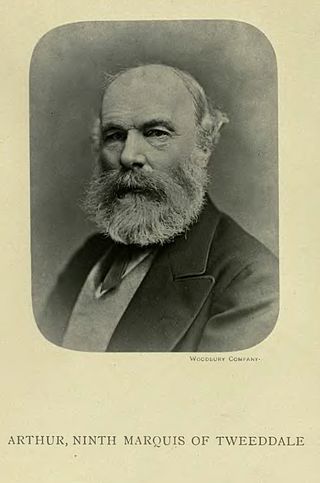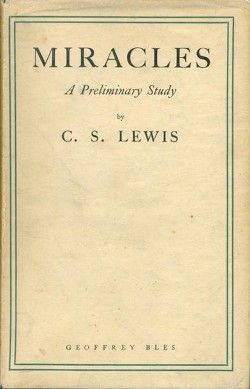Related Research Articles
William B. Ellern is an American science fiction author. Ellern has worked as an engineer, including for JPL, Raytheon, Boeing, Hughes Aircraft and Northrop Corporation.

Marquess of Tweeddale is a title of the Peerage of Scotland, created in 1694 for the 2nd Earl of Tweeddale. Lord Tweeddale holds the subsidiary titles of Earl of Tweeddale, Earl of Gifford (1694), Viscount of Walden (1694), Lord Hay of Yester (1488), and Baron Tweeddale, of Yester in the County of Haddington (1881), all but the last in the Peerage of Scotland. As Baron Tweeddale in the Peerage of the United Kingdom, Lord Tweeddale sat between 1881 and 1963 in the House of Lords. The Marquess's eldest son uses Viscount Walden as a courtesy title.

William Thomson Hay was an English comedian who wrote and acted in a schoolmaster sketch that later transferred to the screen, where he also played other authority figures with comic failings. His film Oh, Mr. Porter! (1937), made by Gainsborough Pictures, is often cited as the supreme British-produced film-comedy, and in 1938 he was the third highest-grossing star in the UK. Many comedians have acknowledged him as a major influence. Hay was also a keen amateur astronomer.

Colonel Arthur Hay, 9th Marquess of Tweeddale,, known before 1862 as Lord Arthur Hay and between 1862 and 1876 as Viscount Walden, was a Scottish soldier and ornithologist.

Beaumanor Hall is a stately home with a park in the small village of Woodhouse on the edge of the Charnwood Forest, near the town of Loughborough in Leicestershire, England. The present hall was built in 1842–8 by architect William Railton and builder George Bridgart of Derby, for the Herrick family, with previous halls dating back to the 14th century, and is a Grade II* listed building It was used during the Second World War for military intelligence. It is now owned by Leicestershire County Council as a training centre, conference centre and residential facility for young people.

Miracles is a book written by C. S. Lewis, originally published in 1947 and revised in 1960. Lewis argues that before one can learn from the study of history whether or not any miracles have ever occurred, one must first settle the philosophical question of whether it is logically possible that miracles can occur in principle. He accuses modern historians and scientific thinkers, particularly secular biblical scholars, of begging the question against miracles, insisting that modern disbelief in miracles is a cultural bias thrust upon the historical record and is not derivable from it.
George Johnson may refer to:

Oliver Perry Hay was an American herpetologist, ichthyologist, and paleontologist.
Hay is an English and Scottish surname shortened from the Scoto-Norman de la Haye. A common variation is Hayes, and to a lesser degree Haynes, Haines, or Hughes. Notable people with the surname Hay include:
William Hayes may refer to:

Penns Hall is a building on Penns Lane, Walmley, Sutton Coldfield, Birmingham, England, operated as a hotel and country club by Ramada International. The complex is now closed to the public due to the housing of asylum seekers. It is a Grade B locally listed building, and is licensed as a venue for civil marriages and civil partnerships.
William Hay may refer to:

Karl August Folkers was an American biochemist who made major contributions to the isolation and identification of bioactive natural products.
Hernandez v. Commissioner, 490 U.S. 680 (1989), is a decision of the United States Supreme Court relating to the Internal Revenue Code § 170 charitable contribution deduction.

The Black Arrow is a 1948 American adventure film directed by Gordon Douglas and starring Louis Hayward and Janet Blair. It is an adaptation of the 1888 novel of the same title by Robert Louis Stevenson.

The Bridger Formation is a geologic formation in southwestern Wyoming. It preserves fossils dating back to the Ypresian Epoch of the Paleogene Period. The formation was named by American geologist Ferdinand Vandeveer Hayden for Fort Bridger, which had itself been named for mountain man Jim Bridger. The Bridger Wilderness covers much of the Bridger Formation's area.
William Perry was an Anglican priest.

Glengilp distillery was a whisky distillery located, from 1831 to 1937, on the banks of the Crinan Canal at Ardrishaig, Argyll and Bute in the west of Scotland.
Perry William Wilson was an American microbiologist and biochemist. He gained a scientific reputation as an outstanding pioneer in transforming the science of biological nitrogen fixation. His research helped to transform a mainly descriptive science into a more quantitative and analytic science based on biochemistry and statistical methods and control in bacteriology. He was called the "dean of biological nitrogen fixation".
References
- ↑ "Guide to the William Perry Hay Papers". University of Florida Smathers Libraries. Archived from the original on 2012-12-11.
- ↑ Needham, James G. (1947). "William Perry Hay: 1871-1947". Science. 105 (2732): 490. doi:10.1126/science.105.2732.490. JSTOR 1674381. PMID 17796171.